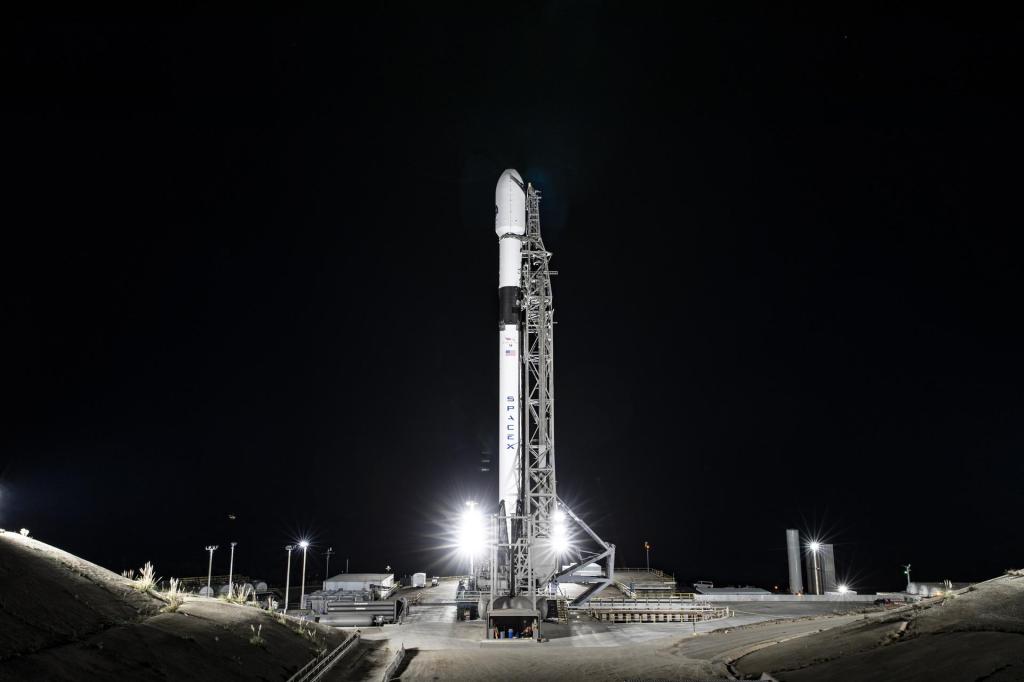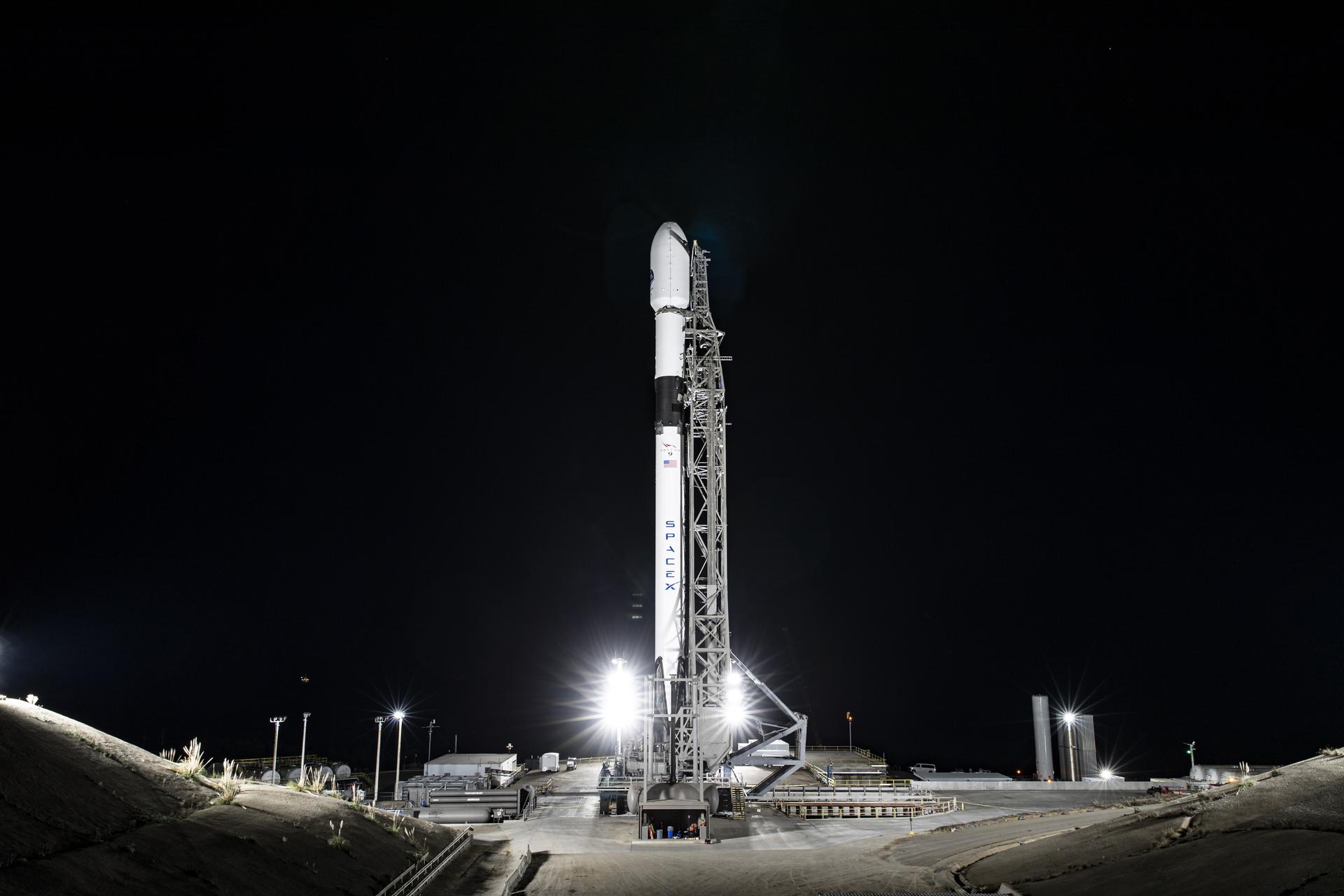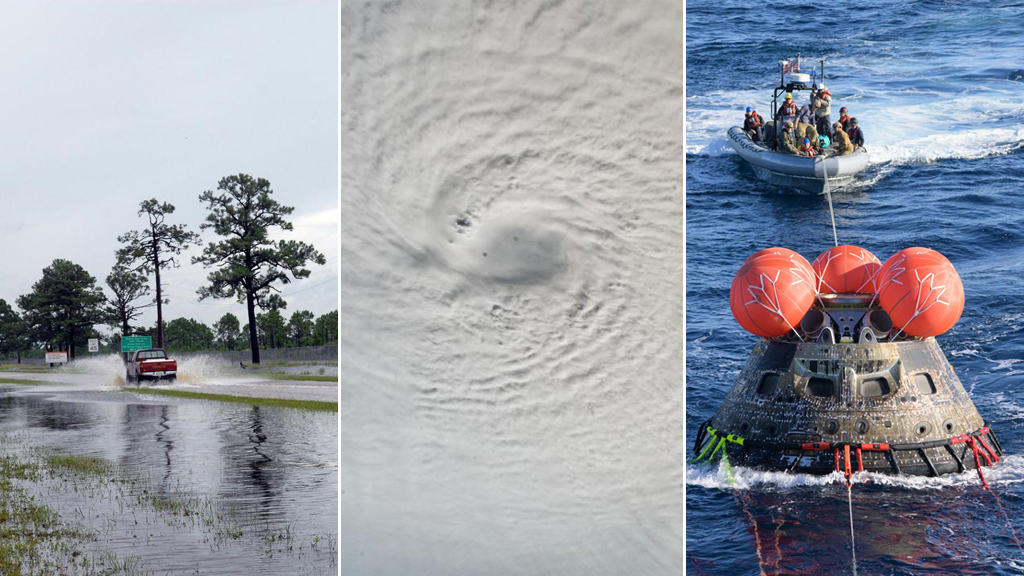PROJECT
Global Navigation Satellite System bistatic radar receiver (NGRx)
SNAPSHOT
An SMD-sponsored team is developing a new radar receiver that will enable future spaceborne instruments to process more signals and produce data at much higher resolution—greatly enhancing scientists’ ability to study storms, observe polar ice, predict floods, and measure sea surface height.

Blistering hurricanes cost coastal communities around the world millions of dollars and thousands of lives each year. Learning more about these intricate storm systems would allow researchers to improve predictive weather models and forecast severe storms with greater ease.
“We can’t control severe weather events, but we may be able to minimize their impact on human populations by giving people more time to prepare,” said Christopher Ruf, professor of Climate and Space Science at the University of Michigan, Ann Arbor.
Ruf, who also serves as the principal investigator for NASA’s Cyclone Global Navigation Satellite System (CYGNSS) mission, has already developed a small constellation of micro-satellites that helps scientists measure wind speeds over Earth’s oceans. Now, with support from NASA’s Earth Science Technology Office, Ruf wants to develop a new bistatic radar receiver that will substantially increase the quality of data gathered by future CYGNSS satellites.
“These satellites have been a great asset to scientists looking to study not just cyclones, but also things like near-surface soil moisture and the extent of microplastic debris in the ocean. This new receiver will make future components of the CYGNSS system even more valuable to Earth scientists,” said Ruf.
A Pegasus XL rocket brought the first payload of CYGNSS instruments into Low Earth Orbit (LEO) in 2016. Spaced about 12 minutes apart, these eight small satellites use signals from existing GPS instruments to observe Earth via scatterometry. While most scatterometric instruments feature both a transmitter and a receiver, CYGNSS satellites take advantage of existing radar signals to reduce the overall complexity and cost of operating in space.
“Scatterometry uses a transmitter to beam radar signals to Earth’s surface and a receiver to determine how strongly those emitted signals reflect off of Earth back into space. Within a single instrument package, that payload becomes pretty heavy. By tapping into transmitted radar signals produced by GPS satellites already in orbit, we can remove the transmitter component from our instruments and still produce excellent data,” said Ruf.
But there’s room for improvement. CYGNSS satellites currently orbiting Earth can only process four transmission signals at a time, which limits their accuracy. In addition, CYGNSS satellites can only process L1 signals, which are transmitted at a frequency of 1575.42 MHz. This has a negative impact on both horizontal and vertical resolution of gathered data, making it difficult to use CYGNSS to study phenomena such as ice thickness and polar ice extent.
“CYGNSS has performed remarkably well these past few years, but as we expand its mission to include more science areas, we’ll need to improve certain components of these instruments,” said Ruf.
His next-generation Global Navigation Satellite System bistatic radar receiver (NGRx) would do just that, increasing the scientific utility of CYGNSS instruments for studying complex Earth systems. Instead of only processing four L1 radar signals from GPS satellites, future instruments equipped with this receiver would be able to process as many as fourteen L1 and L5 radar signals from both GPS and Galileo satellites.
“As a direct result of these changes, horizontal resolution will be improved by a factor of three, vertical resolution will be improved by a factor of ten, and spatial coverage by a factor of at least two, perhaps even four,” said Ruf.
That improved resolution will enable researchers to study storms better, observe polar ice extent more clearly, develop better models for flood prediction, and even measure sea surface at a level of detail that surpasses current CYGNSS instruments by a factor of ten.
“To have these capabilities onboard cost-efficient small satellites is pretty incredible. We’ll be able to produce excellent science at a much lower cost,” said Ruf.
The Instrument Incubation Program (IIP) at NASA’s Earth Science Technology Office dedicates itself to helping researchers like Ruf develop their instrument concepts into fully functional sensors. Specifically, IIP provided Ruf with critical funding and expertise as he developed his next-generation radar receiver.
While the bistatic radar receiver isn’t quite ready to venture into space, it is ready for substantial airborne testing. Partnering with the New Zealand Ministry of Business, Innovation and Employment; the New Zealand Space Agency; Air New Zealand; and the University of Auckland; Ruf plans to fix a prototype of his sensor to a Bombardier Q300 passenger plane. Ruf’s sensor will gather oceanic data as the plane services routes across New Zealand, helping his team determine if the instrument is ready for spaceborne applications.
“We’re thrilled to be working with our colleagues in New Zealand to prepare this radar receiver for space. To take something that was just an idea and develop it into a working prototype has been very satisfying, and we’re excited to send this instrument into space someday soon,” said Ruf.
PROJECT LEADS
Christopher Ruf, University of Michigan, Ann Arbor
SPONSORING ORGANIZATIONS
Earth Science Division Instrument Incubation Program
Read more Technology Highlights


































